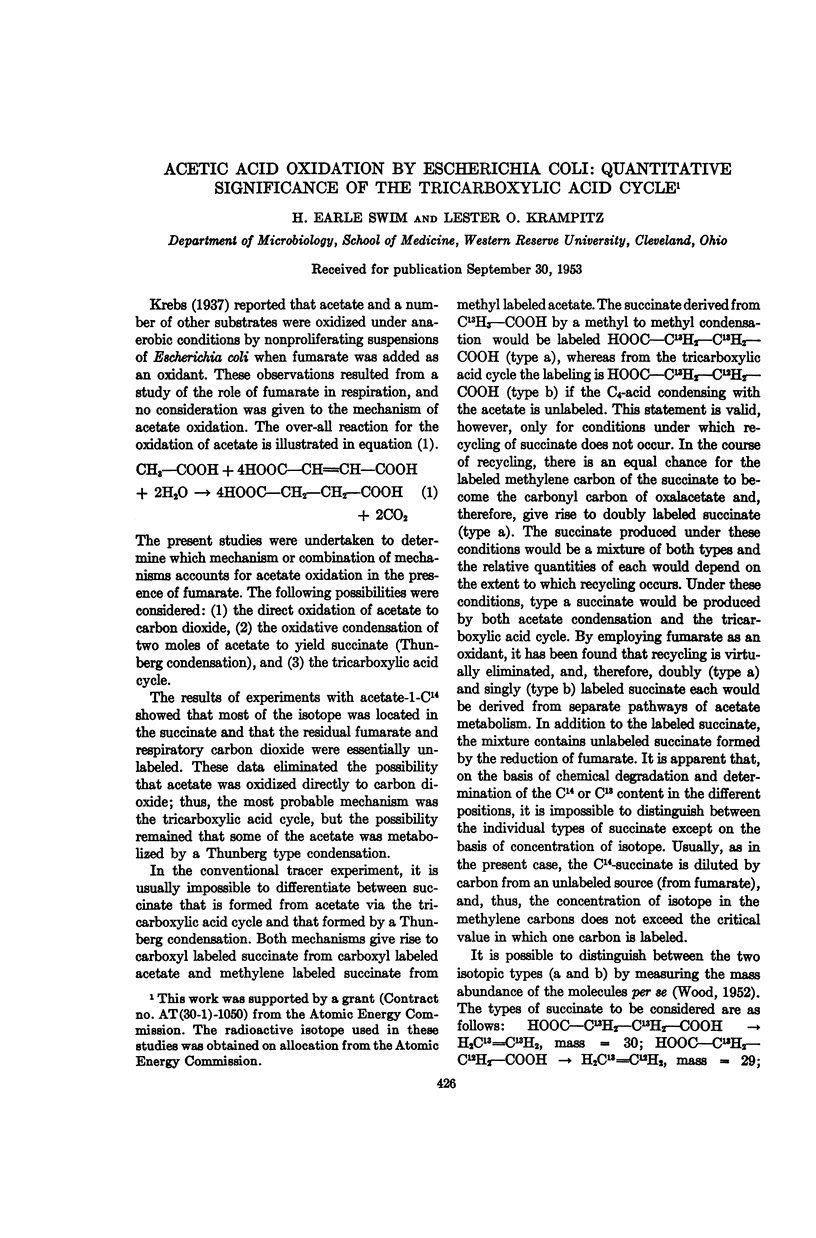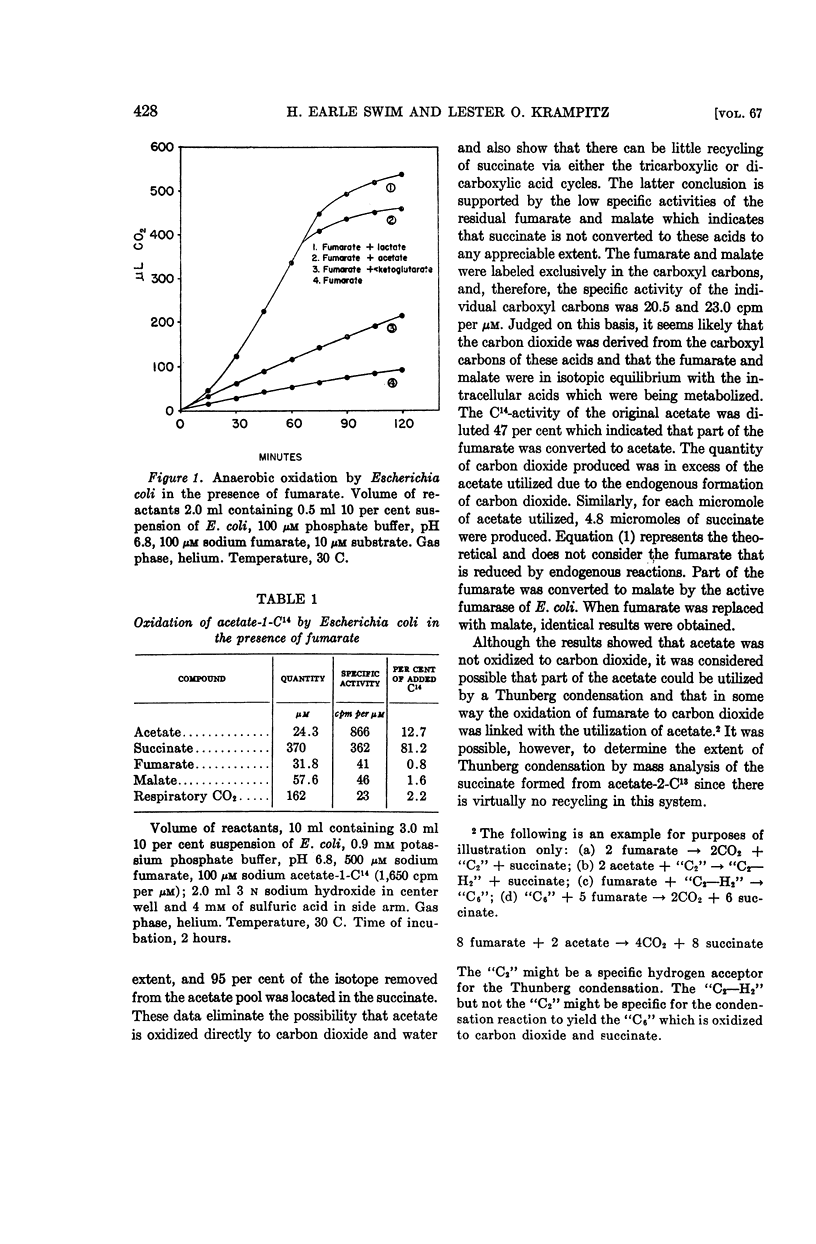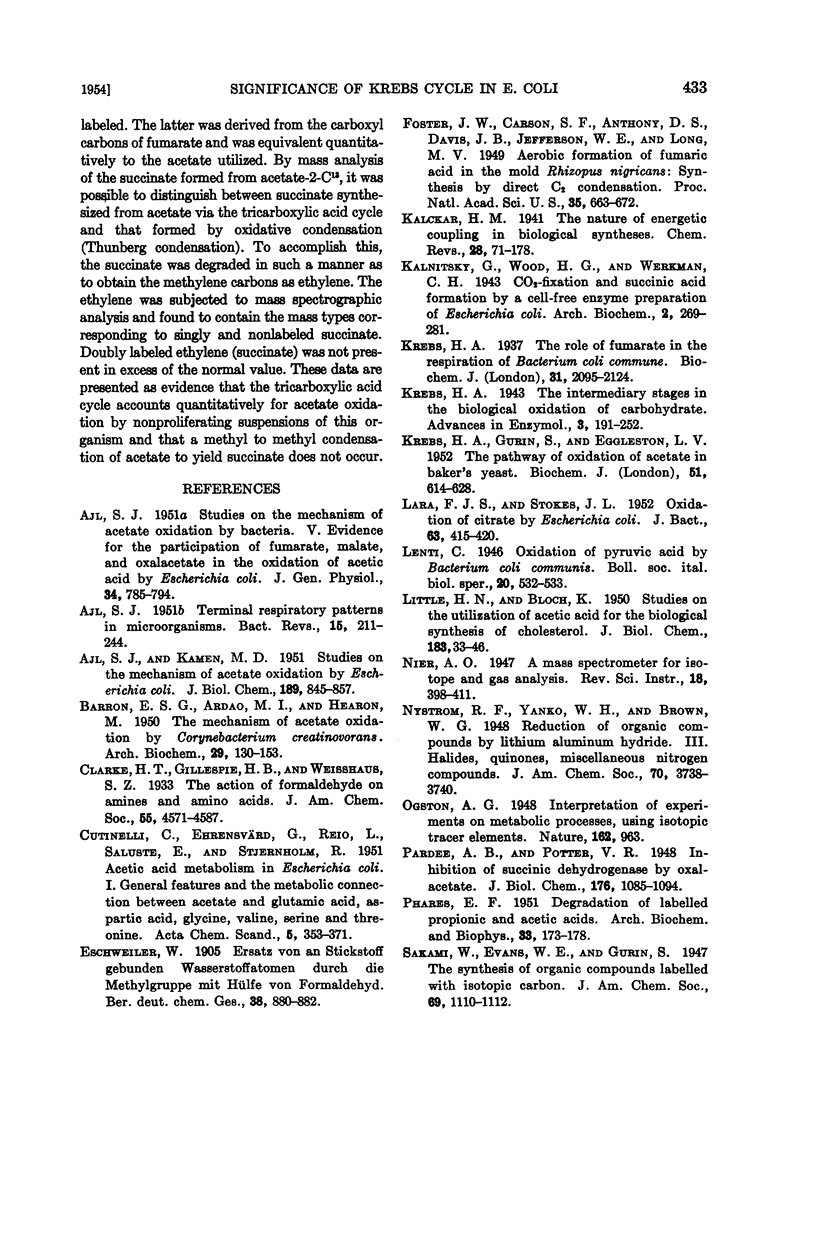Full text
PDF








Selected References
These references are in PubMed. This may not be the complete list of references from this article.
- AJL S. J., KAMEN M. D. Studies on the mechanism of acetate oxidation by Escherichia coli. J Biol Chem. 1951 Apr;189(2):845–857. [PubMed] [Google Scholar]
- AJL S. J. Studies on the mechanism of acetate oxidation by bacteria. V. evidence for the participation of fumarate, malate, and oxalacetate in the oxidation of acetic acid by Escherichia coli. J Gen Physiol. 1951 Jul;34(6):785–794. doi: 10.1085/jgp.34.6.785. [DOI] [PMC free article] [PubMed] [Google Scholar]
- AJL S. J. Terminal respiratory patterns in microorganisms. Bacteriol Rev. 1951 Dec;15(4):211–244. doi: 10.1128/br.15.4.211-244.1951. [DOI] [PMC free article] [PubMed] [Google Scholar]
- BARRON E. S. G., ARDAO M. I., HEARON M. The mechanism of acetate oxidation by Corynebacterium creatinovorans. Arch Biochem. 1950 Nov;29(1):130–153. [PubMed] [Google Scholar]
- FOSTER J. W., CARSON S. F. Aerobic formation of fumaric acid in the mold Rhizopus nigricans, synthesis by direct C2 condensation. Proc Natl Acad Sci U S A. 1949 Dec;35(12):663–672. doi: 10.1073/pnas.35.12.663. [DOI] [PMC free article] [PubMed] [Google Scholar]
- KERBS H. A., GURIN S., EGGLESTON L. V. The pathway of oxidation of acetate in baker's yeast. Biochem J. 1952 Aug;51(5):614–628. doi: 10.1042/bj0510614. [DOI] [PMC free article] [PubMed] [Google Scholar]
- Krebs H. A. The role of fumarate in the respiration of Bacterium coli commune. Biochem J. 1937 Nov;31(11):2095–2124. doi: 10.1042/bj0312095. [DOI] [PMC free article] [PubMed] [Google Scholar]
- LARA F. J. S., STOKES J. L. Oxidation of citrate by Escherichia coli. J Bacteriol. 1952 Mar;63(3):415–420. doi: 10.1128/jb.63.3.415-420.1952. [DOI] [PMC free article] [PubMed] [Google Scholar]
- SWIM H. E., KRAMPITZ L. O. Acetic acid oxidation by Escherichia coli; evidence for the occurrence of a tricarboxylic acid cycle. J Bacteriol. 1954 Apr;67(4):419–425. doi: 10.1128/jb.67.4.419-425.1954. [DOI] [PMC free article] [PubMed] [Google Scholar]
- SZULMAJSTER J., GRUNBERG-MANAGO M., DELAVIER C. Utilisation du citrate par Escherichia coli. Experientia. 1952 Jan 15;8(1):26–28. doi: 10.1007/BF02168891. [DOI] [PubMed] [Google Scholar]
- UTTER M. F., WOOD H. G. Mechanisms of fixation of carbon dioxide by heterotrophes and autotrophs. Adv Enzymol Relat Subj Biochem. 1951;12:41–151. doi: 10.1002/9780470122570.ch2. [DOI] [PubMed] [Google Scholar]
- VAUGHN R. H., OSBORNE J. T., WEDDING G. T., TABACHNICK J., BEISEL C. G., BRAXTON T. The utilization of citrate by Escherichia coli. J Bacteriol. 1950 Aug;60(2):119–127. doi: 10.1128/jb.60.2.119-127.1950. [DOI] [PMC free article] [PubMed] [Google Scholar]
- WOOD H. G. A study of carbon dioxide fixation by mass determination of the types of C13-acetate. J Biol Chem. 1952 Feb;194(2):905–931. [PubMed] [Google Scholar]


